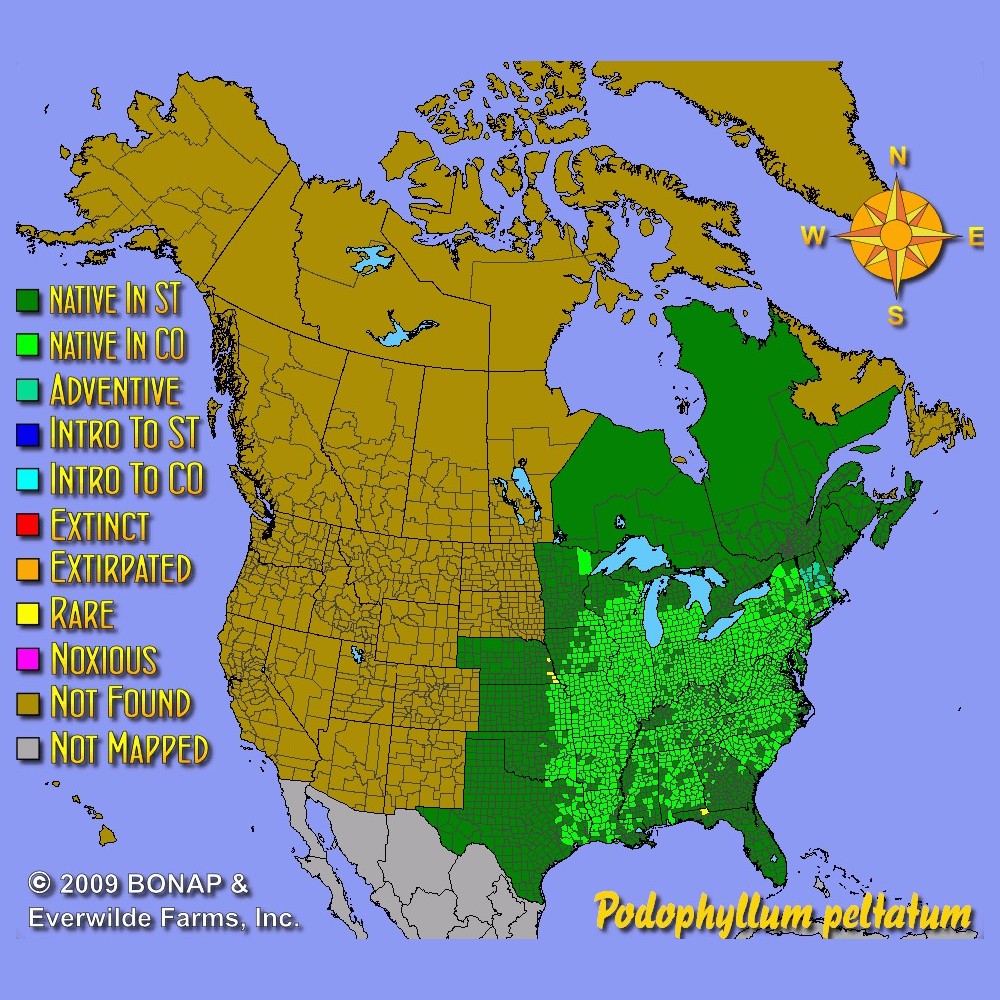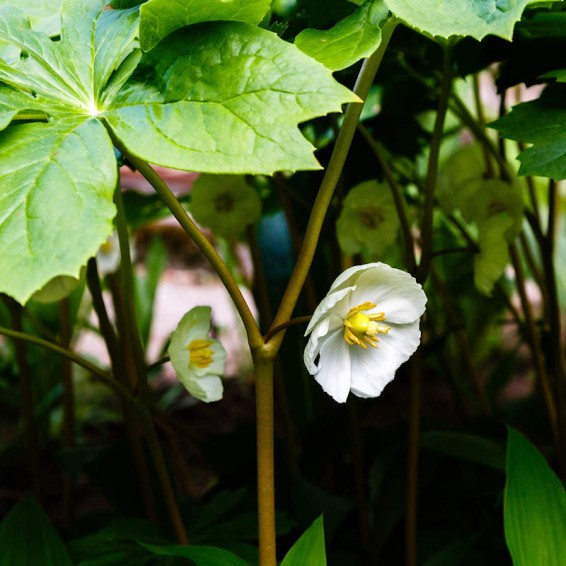May Apple Seeds
Podophyllum peltatum
- HOW TO GROW
- FAST FACTS
HOW TO GROW
Sowing: To help soften the hard coating on these May apple seeds and speed germination, pour hot water over the seeds and allow them to soak for 24 hours before planting. Direct sow in late fall, planting just below the surface of the soil. For spring planting, mix the soaked May apple seeds with moist sand and store in the refrigerator for 90 days before planting. Keep the soil lightly moist until germination, which can be irregular and slow.
Growing: Water seedlings until they become established; this plant develops rather slowly. Mature plants tolerate occasional drought, though they prefer moist soil and will benefit from watering in dry weather. This plant grows well in a variety of soil types including sand and clay, and can spread vigorously by rhizomes. Mature plants can be divided. This plant attracts bees and and butterflies, and makes an excellent ground cover.
Harvesting: For cut flowers, choose stems with flowers that have just opened. Strip the foliage that will fall below the water level, and place in water immediately.
Seed Saving: The seed of this plant is contained in its unusual fruits, which ripen from green to yellow. Collect the fruits as soon as they have ripened to a yellow color, and remove the seeds from the pulp. Since germination rates are best from fresh Podophyllum Peltatum seed, plant as soon as possible.
FAST FACTS
Common Names: Mandrake Root, Indian Apple, Wild Mandrake, Podophylle pelt, Pomme de mai
Latin Name: Podophyllum peltatum
Species Origin: US Native Wildflower
Type: Native Wildflowers
Life Cycle: Perennial
USDA Zones: 3, 4, 5, 6, 7, 8, 9
US Regions: Midwest, Northern, Northeast, Southeast
Seeds per Ounce: 1,000
Stratification: Cold/Wet for 12 Weeks
Germination Ease: Stratify 12 Weeks
Sunlight: Part Sun, Shade
Height: 12 Inches
Color: White
Bloom Season: Blooms Late Spring
DESCRIPTION

HOW TO GROW
Sowing: To help soften the hard coating on these May apple seeds and speed germination, pour hot water over the seeds and allow them to soak for 24 hours before planting. Direct sow in late fall, planting just below the surface of the soil. For spring planting, mix the soaked May apple seeds with moist sand and store in the refrigerator for 90 days before planting. Keep the soil lightly moist until germination, which can be irregular and slow.
Growing: Water seedlings until they become established; this plant develops rather slowly. Mature plants tolerate occasional drought, though they prefer moist soil and will benefit from watering in dry weather. This plant grows well in a variety of soil types including sand and clay, and can spread vigorously by rhizomes. Mature plants can be divided. This plant attracts bees and and butterflies, and makes an excellent ground cover.
Harvesting: For cut flowers, choose stems with flowers that have just opened. Strip the foliage that will fall below the water level, and place in water immediately.
Seed Saving: The seed of this plant is contained in its unusual fruits, which ripen from green to yellow. Collect the fruits as soon as they have ripened to a yellow color, and remove the seeds from the pulp. Since germination rates are best from fresh Podophyllum Peltatum seed, plant as soon as possible.
FAST FACTS
Common Names: Mandrake Root, Indian Apple, Wild Mandrake, Podophylle pelt, Pomme de mai
Latin Name: Podophyllum peltatum
Species Origin: US Native Wildflower
Type: Native Wildflowers
Life Cycle: Perennial
USDA Zones: 3, 4, 5, 6, 7, 8, 9
US Regions: Midwest, Northern, Northeast, Southeast
Seeds per Ounce: 1,000
Stratification: Cold/Wet for 12 Weeks
Germination Ease: Stratify 12 Weeks
Sunlight: Part Sun, Shade
Height: 12 Inches
Color: White
Bloom Season: Blooms Late Spring





